- Home
- Larry McMurtry
The Colonel and Little Missie Page 17
The Colonel and Little Missie Read online
Page 17
BY 1893 Buffalo Bill’s Wild West had put behind them a number of successful runs, with the show on Staten Island and their appearance at the Golden Jubilee being among the best. Millions saw the show on its European runs, and more millions saw it in America. But nothing Cody or Salsbury had done or would ever do surpassed their success at the World’s Columbian Exposition in Chicago in 1893.
Salsbury, unable to get adequate space inside the exposition grounds, wisely rented two large lots right across from the main entrance to the fair itself. So vast was the scale of this exposition, one of the most successful in history, that many people probably wandered into the Wild West thinking they were seeing the fair itself: many of them spent all their money with Cody and Salsbury and never caught the real fair across the street.
The great Chicago Columbian Exposition was open from May until the end of October, and some 27,500,000 people poured through the gates; an amazing 716,000 paid admission on one day, October 9. Major Burke saw to it that Cody was constantly in the papers. Cody was the only private citizen to join two thousand legislators and watch President Grover Cleveland push a button and turn on the lights to get the exposition going.
With time to spare, Major Burke outdid himself, producing a lavishly illustrated sixty-four-page booklet which didn’t stint in its praise, calling the show:
The biggest outdoor animated amusement exploit extant or known either ancient or modern. Life, action, skill, daring, danger defied; one thousand animated pictures in two hours given by flesh and blood; creation’s greatest handiwork, nature’s noblest mechanism too natural and colossal for canvas or building. The greensward our carpet, heaven’s blue canopy our covering . . . an affair of magnitude, second to none in novel entertainment enjoyment, instruction, interest and educative merit.
Cody had insisted on one major change in the standard program: for the ever-popular Attack on the Settler’s Cabin he substituted the even more popular Battle of the Little Bighorn, which became the show’s finale. Once again Cody was acutely exploiting—as he had with the scalping of Yellow Hair—the tragic fate of the erratic general whom he had, so long ago, guided across the plains.
Annie Oakley’s wildly popular shooting act came second on the program, right after the Grand Entry of the Rough Riders of the World. She too was feted in Chicago, but not as much as Cody.
Since the big exposition attracted scores of celebrities, Major Burke devised foolproof techniques for getting them over to the Wild West to have their pictures taken. Among those so snatched was the maharajah of Kapurthala and Frédéric Bartholdi, the sculptor of the Statue of Liberty.
In Chicago Burke and Salsbury saw a way to get the Wild West favorable publicity by organizing the occasional charity performance. Cody liked children—at least he liked them in short stretches—and was often photographed beaming on several in a grandfatherly way. Soon his hair would begin to turn and he would have to consent to wigs, but in Chicago he was a fine-looking man of forty-seven. Someone had the idea of having a “poor children’s day” at the exposition, a good idea vetoed by the fair’s manager, Harlow Higinbotham, who feared the sight of ten thousand grubby waifs might put off paying customers.
Cody, Salsbury, and Burke at once leapt into this breach, readily paying for a picnic, a parade, and a day at Buffalo Bill’s Wild West for poor children from no less than seven orphanages and homes. The publicity that resulted was music to Major Burke’s ears:
Colonel Cody is a true philanthropist. He does not distribute tracts, but sandwiches; he does not inculcate any high moral lessons, but he smooths the rugged pathway of the children of the streets for at least one day by taking them away from their squalid surroundings. So, too, shall Colonel Cody’s trail toward the happy hunting grounds be made easy and fringed with prairie flowers because he has done this much to lighten the lives of others.
From Chicago a great lesson was learned; after that, charity days for poor children were to be a regular feature of Buffalo Bill’s Wild West.
The one event that didn’t quite work out as planned was the thousand-mile horse race from Chadron, Nebraska, to Chicago. Cody, having himself ridden a 322-mile Pony Express run, initially saw nothing wrong with a thousand-mile horse race; but very soon, every form of animal protection society then extant was on his back. Major Burke was forced to issue a number of exculpatory leaflets, pointing out that Buffalo Bill was a charter member of the Humane Society and that he had also been among the first to lobby for the use of clay pigeons rather than live birds in pigeon shoots.
Nonetheless, five horses finished and a rancher from Chadron took home the big first prize.
So far as Rough Riders went, Cody pulled out all stops for the Chicago run. Besides the Cossacks, gauchos, and vaqueros, he added Syrian and Arabian horsemen. He also hired the great trick roper Vincente Orapeza, who became the teacher of Will Rogers.
Also, the Indians were resplendent. John Y. Nelson was still on hand, with his many half-Sioux children. Two tiny survivors of Wounded Knee were there, one of whom, Little No Neck, Major Burke commendably adopted. The very respected Sioux leader Young Man Afraid of His Horses was there, and Red Cloud’s son Jack.
It may be that the Chicago run in 1893 was the high-water mark for Buffalo Bill’s Wild West. The success was due partly to location and partly to advertising. Swollen as the troupe was, this stand made money—estimates are that Cody and Salsbury cleared close to a million dollars.
Encouraged by this great box office, and concluding, perhaps, that their longer runs were their most successful, they decided to go back to New York, add a few attractions, and hope the crowds would come.
This time they chose south Brooklyn, where there was ample space. Salsbury no longer wanted to be vulnerable to the vagaries of the weather, so a covered grandstand was built. Major Burke kicked up as much publicity as he could and the shows ran twice a day, admission fifty cents.
But to the shock of the owners and promoters, customers declined to come. Chicago had been a new, bursting-at-the-scenes city on the rise. Not only was the exposition a big draw, but the whole of the Midwest looked to Chicago as the likeliest place to find entertainment. So in they flowed.
The same could not be said for south Brooklyn. New Yorkers, then as now, always have too much entertainment to choose from. Cody was no longer a novelty and there were troupes of many sorts to lure the crowds.
The failure was sharp and painful. Within six months of his greatest financial triumph Cody was forced to borrow $5,000 from Salsbury. In south Brooklyn it cost nearly that much a day just to feed the performers and mount the show.
To make matters worse, it was just at this troubled point that Nate Salsbury’s health began to fail. Cody himself was occasionally under the weather, probably because he was drinking heavily again.
But the big troupe of riders and performers had been laboriously acquired and neither of the half-sick showmen wanted to let them go. A few performers peeled off and went to Pawnee Bill but most stayed put and tucked in their three meals a day while the bosses did some serious thinking.
The thinking soon yielded a solution that promised profits: they hired the mostly unsung junior partner of P. T. Barnum, the man who, more than any other, had mastered the logistics of moving large companies of performers around America in the cheapest and most efficient way.
His name was James Bailey. South Brooklyn was soon abandoned and Buffalo Bill’s Wild West, grown yet larger by the addition of some colorful Zouaves, set out on the road. Annie Oakley and Frank Butler had their own railroad car, one of the eighty-two that it took to transport this vast company from place to place. At one point the Wild West performed in as many as 130 towns a year, many of them so small that they had never expected anything as exciting as Buffalo Bill’s Wild West to show up in their neighborhood. Bailey added sideshows, making the Wild West more circuslike. At one point Salsbury, not content, decided that minstrel shows were the coming thing; he soon had three hundred black performers
going from town to town across the South. But the black Wild West did not succeed.
11
WHAT might be called saturation touring became the pattern for Buffalo Bill’s Wild West as the nineteenth century moved toward its close. James Bailey knew his business well. He seemed to have a map of the nation’s rail system in his head, and an up-to-date timetable as well. He had thoroughly mastered the complex economics of touring companies and kept the show profitable, though with only a minuscule margin of error. Cody and Annie Oakley remained the headliners, becoming, with such broad exposure, even greater superstars than they had been. Johnny Baker’s star was also rising.
However, as any touring actor or musician knows, touring takes its toll. Annie and Frank adapted to it better than Cody, whose tendency to burn the candle at both ends left him often irritable.
When the Spanish-American War broke out in 1898, Cody, who had been running his Congress of Rough Riders for some years, was naturally expected to volunteer. How could America have a war without Buffalo Bill? His old friend General Miles, who seemed to turn to Cody in every military emergency, naturally urged him to take a command. Cody was probably in no mood for war at this time, but he grandly offered to provide forty-five scouts and four hundred horses, though his troupe owned only about 450 at this time. Nothing more was heard of this offer—Buffalo Bill did not fight in the Spanish-American War. Theodore Roosevelt soon recruited his own Rough Riders; it is unlikely that T.R. would have wanted to share the stage with Cody anyway. General Miles himself made only a modest contribution to the conflict, just as it was winding down.
The Wild West continued to tour, always running just a step or two ahead of financial disaster. Don Russell pointed out that Cody was trapped by his own ambition. He couldn’t afford either to quit or not to quit. He was still making good money, so much that he couldn’t afford to turn it down, and yet, if he had stopped touring, he would have been broke within two months.
12
WHEN the nineteenth century ended William F. Cody was undoubtedly one of the most famous people on earth. Most of the seventeen hundred dime novels that featured him had already been published. Tens of thousands of photographs of him had been taken; tens of thousands of posters showing him on a horse had been distributed. James Bailey had concluded that 130 shows a year might be pushing it, but the Wild West still did at least one hundred, and the troupe still employed nearly five hundred people. Virtually every celebrity to pass through America since 1883 had seen at least one performance, including Sarah Bernhardt. Cody had met every president and was an icon looked up to by millions of American children.
Cody was only fifty-four when the century ended—they had been very active years but he had not lost his looks and, for that matter, never would. Nobody in America looked better on a horse, an asset he exploited until the end of his life, in 1917. He was an unusually buoyant, optimistic man. Had he been a worrier he might well have worried himself into the grave years earlier, but despite myriad troubles he had the ability to relax and recharge. In show business he had, essentially, no way to go but down; the same comment could be made for almost anyone of a certain age in show business; and yet, as he partnered with various people and plunged into venture after venture, he frequently managed to rise again, to find pockets of profitability that no one else could have found.
There is no doubt, though, that for the last fifteen years of his life he was in a long footrace with his creditors. The footrace, from time to time, left him feeling very worn out. Various of his competitors were always counting him out, only to have him bob up again. As late as 1905, after Annie Oakley had left the show, Cody had one of his most profitable runs ever, in Paris. A year later, in Marseilles, he had such a spectacular opening week that he decided he could afford to donate $5,000 to victims of the eruption of Mount Vesuvius; but these bright moments were soon shadowed by the death of James Bailey, who had so brilliantly managed the enterprise for some twelve years. Salsbury had died in 1902. The 1907 season was the first ever in which Buffalo Bill Cody was sole manager of his own show. From its incorporation in 1883 either Nate Salsbury or James Bailey had done most of the organizational work.
But a big show was planned for Madison Square Garden and there was no one to run it but Cody himself. Many expected him to falter, or throw up his hands, but he didn’t, nor did he during the next two years of touring. According to his own testimony he was in his office by eight-thirty every morning and he worked all day, though, as he frankly admitted, such desk work was not his forte.
By this point Cody only owned one-third of his own show. The Bailey estate had bought out Salsbury’s interest; they owned two-thirds. A $13,000 note turned up in the Bailey documents. Cody said he had paid it but the Baileys weren’t so sure. Cody certainly did his best to manage the show well and protect the Baileys’ interest. The $13,000 note is worth mentioning only because squabbles over credit were to be a feature of the rest of Cody’s life.
Cody had carried on a fairly polite rivalry with Gordon Lillie (Pawnee Bill) for many years. Cody irritated Lillie by lording it over him, but eventually it became clear to both men that they ought to team up, so Buffalo Bill’s Wild West with Pawnee Bill’s Wild East did good business for a while. The Wild East featured musical elephants, camel caravans, boomerang throwers, fakirs, and the like. When Annie Oakley considered coming out of retirement in 1909, Cody and Lillie tried to hire her, but she went instead with a new show, called Young Buffalo’s Wild West, for a few years, and then left show business again.
Eventually Gordon Lillie bought out the Baileys’ two-thirds interest in the Wild West. He had already acquired Cody’s third. Finally, as sole owner of the world’s most famous troupe, Lillie got to lord it over Cody a bit. He was usually generous with Cody—for one thing he saw to the cancellation of the $13,000 note; this was part of his deal with the Baileys. Buffalo Bill and Pawnee Bill could neither live with nor live without one another—wranglings over who owed how much to whom continued until the end of Cody’s life.
13
LATE in October 1901, Buffalo Bill’s Wild West was traveling deep into the night, bound for Danville, Virginia, where they would play their last engagement of the year. All the performers were probably looking forward to being home, if they had homes apart from the show itself. Annie Oakley and Frank Butler were asleep in their private car.
At three in the morning a railroad engineer named Lynch, perhaps not realizing that the show train consisted of two sections, pulled a switch at the wrong time, so that the show train plowed into a freight train loaded with fertilizer. Brakemen on both trains realized that calamity was inevitable but managed to slow the trains to a speed of about eight miles an hour when they collided.
Even so the carnage was horrifying, with the cars carrying livestock being the worst hit. Five cars full of horses were almost wholly lost; hundreds of horses either died outright or had to be killed. Cody and Johnny Baker estimated the loss as between $50,000 and $60,000—a worse calamity even than the sinking of the steamboat.
Fortunately the show’s personnel were traveling in the rear cars—no employee was much more than shaken up by the collision. Frank Butler told reporters that his watch got smashed—Annie Oakley had wrenched her back. Both Butlers walked away from the wreck readily enough—news stories focused on the loss of the horses and other livestock.
The fact is, however, that Annie Oakley never fired another shot as a member of Buffalo Bill’s Wild West. She retired, and maintained that her retirement was necessary because of the dreadful internal injuries that she suffered in the train wreck. Frank Butler, who at the time said everything was fine, later maintained that his wife had sustained a terrible injury to her hip.
Most of the early biographers, including the usually hard to fool Walter Havighurst, accepted the “dreadful injury” theory of Annie’s retirement; but recently Shirl Kasper has given all this the lie. Less than two months after the wreck, Kasper points out, Annie competed in a shoo
t near Lake Denmark, New Jersey, and hit twenty-three of twenty-five live pigeons. A reporter for American Field praised her shooting highly and mentions that she was quite recovered from the shaking up she had received in the train wreck. Not only did she appear to be in her usual good health, but her long hair was evidently still lustrous and brown, as it had been during all her years as a performer. Had it mysteriously changed color, as women’s hair sometimes does, someone at this well-attended shoot would no doubt have commented on the change.
The competition at Lake Denmark occurred on the seventeenth of December 1901. Only a month later, the sixteenth of January 1902, Annie competed at another shoot, this one on Long Island. She shot well and appeared to be in fine health, but except for a strand here and there, her hair had turned snow white.
What happened?
Frank Butler, who lost nothing but a watch in the train wreck, maintained that the shock of the collision was so great that his wife’s hair had, within about eighteen hours, turned white. It hadn’t, of course, or someone would have noticed it at Lake Denmark, or even sooner, given the publicity the big train wreck received.
Shirl Kasper’s dogged sleuthing turned up two clippings in a scrapbook Annie Oakley kept, both blaming the hair color change on an inattentive attendant at a spa in Arkansas, very likely the famous Hot Springs, which Annie liked and often visited. She was left too long in a bath too hot and her hair turned. It may be that Annie gave this explanation to a friend, never supposing it would surface in a newspaper. Kasper thinks that Annie’s obsessive modesty made her reluctant to admit that she had been scantily clad, even for therapeutic purposes.
As to leaving the show, perhaps she was merely tired of touring. She may have been emboldened to retire because Frank had just secured a lucrative job as the representative of an ammunition company. The Butlers no doubt felt that Frank’s new salary, plus what Annie could earn in shooting competitions, would keep them nicely—and it did.

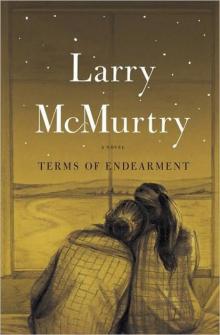 Terms of Endearment
Terms of Endearment Some Can Whistle
Some Can Whistle All My Friends Are Going to Be Strangers
All My Friends Are Going to Be Strangers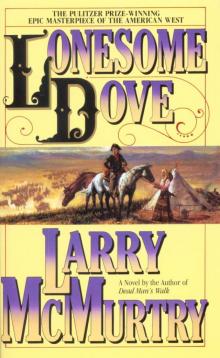 Lonesome Dove
Lonesome Dove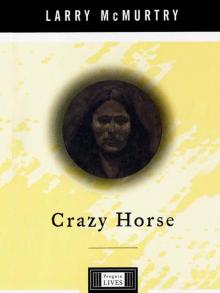 Crazy Horse: A Life
Crazy Horse: A Life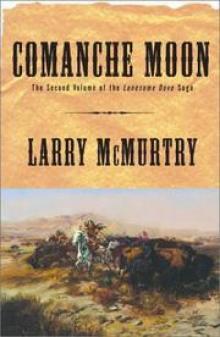 Comanche Moon
Comanche Moon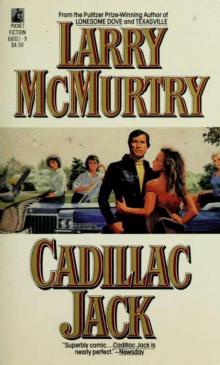 Cadillac Jack
Cadillac Jack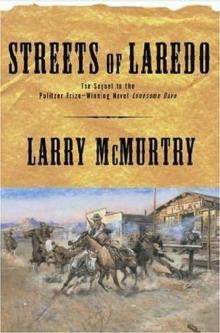 Streets of Laredo
Streets of Laredo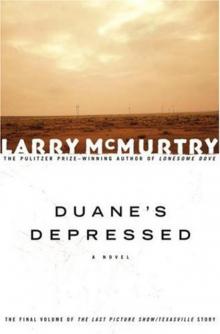 Duane's Depressed
Duane's Depressed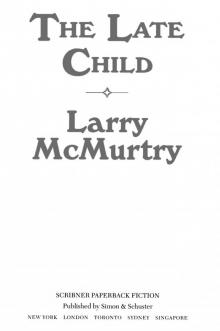 The Late Child
The Late Child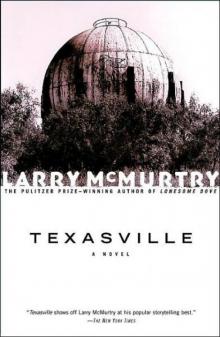 Texasville
Texasville Rhino Ranch
Rhino Ranch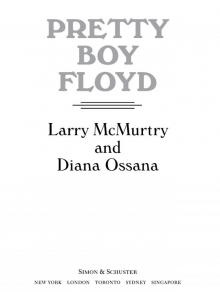 Pretty Boy Floyd
Pretty Boy Floyd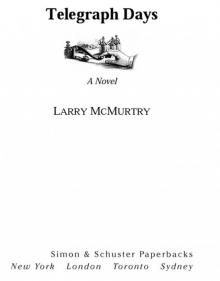 Telegraph Days
Telegraph Days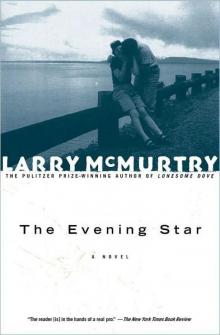 The Evening Star
The Evening Star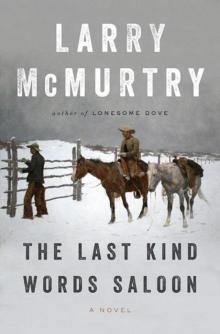 The Last Kind Words Saloon
The Last Kind Words Saloon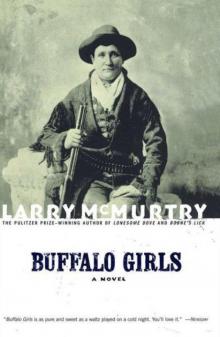 Buffalo Girls
Buffalo Girls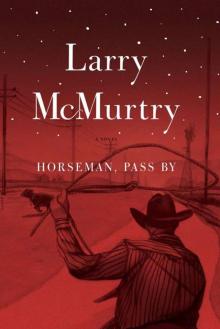 Horseman, Pass By
Horseman, Pass By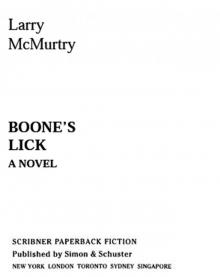 Boone's Lick
Boone's Lick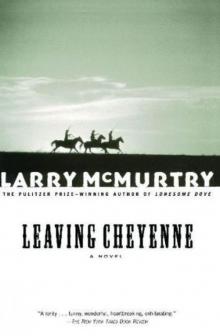 Leaving Cheyenne
Leaving Cheyenne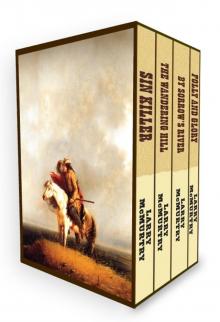 Sin Killer
Sin Killer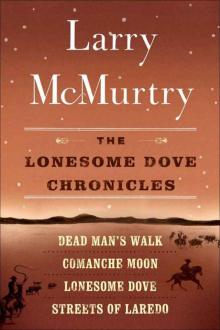 The Lonesome Dove Chronicles (1-4)
The Lonesome Dove Chronicles (1-4)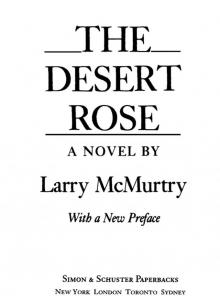 The Desert Rose
The Desert Rose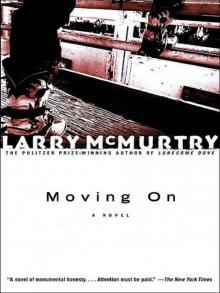 Moving On
Moving On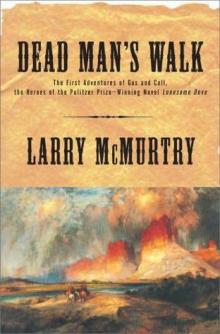 Dead Man's Walk
Dead Man's Walk The Last Picture Show
The Last Picture Show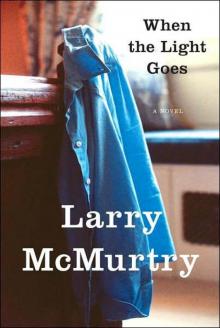 When the Light Goes
When the Light Goes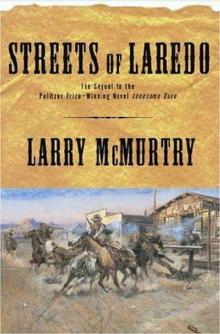 Streets Of Laredo ld-2
Streets Of Laredo ld-2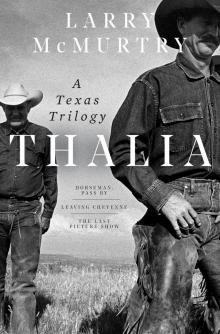 Thalia
Thalia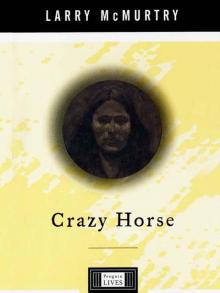 Crazy Horse
Crazy Horse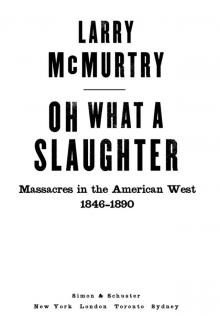 Oh What a Slaughter
Oh What a Slaughter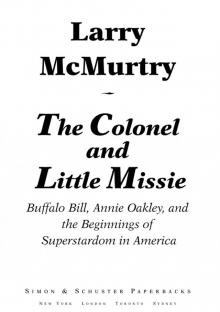 The Colonel and Little Missie
The Colonel and Little Missie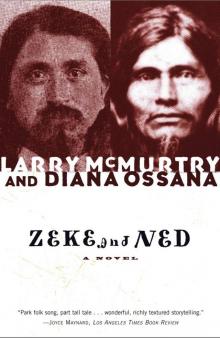 Zeke and Ned
Zeke and Ned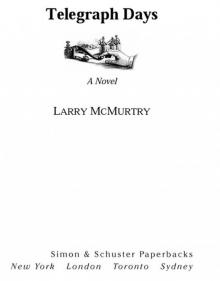 Telegraph Days: A Novel
Telegraph Days: A Novel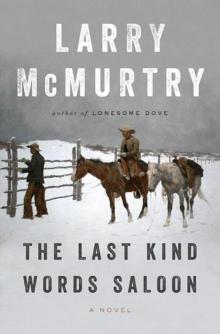 The Last Kind Words Saloon: A Novel
The Last Kind Words Saloon: A Novel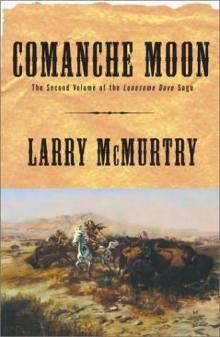 Comanche Moon ld-4
Comanche Moon ld-4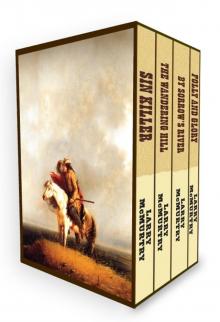 The Berrybender Narratives
The Berrybender Narratives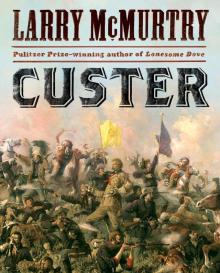 Custer
Custer